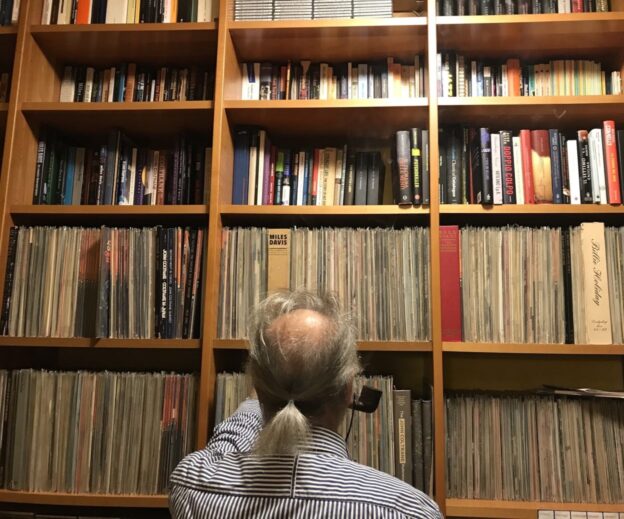 |
Deep Groove Mono is back with another round of collector interviews! We’re kicking things off with a true legend, Italy’s Giorgio Sarchi a.k.a. “Dottor Jazz”. With over five decades of activity, Dott is one of the hobby’s real O.G.’s, and of course he has the jaw-dropping collection to prove it. I became familiar with Dott through the comments section of the London Jazz Collector blog, where he has been sharing his collecting wisdom since the site’s inception (he was actually the very first reader to leave a comment there).
In a way, Dott is also the reason why my blog exists. In late 2013 Andy from LJC reached out to me, explaining that Dott suggested I write an article on mono and stereo Blue Note LPs for Andy’s blog (which I did). Realizing this was a great opportunity to link readers to a blog of my own, I started working on the framework for Deep Groove Mono immediately and the site launched in time for the publishing of my article.
Dott has always been passionate about the science of first pressings (he prefers the term “original pressings”), and his efforts have culminated in a series of ‘underground’ papers documenting those details for Blue Note, New Jazz, and Riverside (contact Dott directly for copies). I may disagree with his stricter use of the phrase “original pressing”, but there’s not much else I can argue about with this master of our hobby.
DGM: How long have you been collecting records and jazz records specifically?
Dott: My parents loved music so I was exposed since an early age. I bought my first record in 1964, when I was 11, a pop seven-inch I still own (but don’t listen to anymore) and my first jazz record in 1968. At first I was a music lover, very far from a collector, but I used to spend all the money I had on records. I grew up with The Beatles, Dylan, The Stones, Hendrix. For three years I spent a summer month in Ireland with an imperative stop in London and subsequent visit to many shops.
From one of these trips I brought home the first Led Zeppelin record. They were completely unknown in Italy and their music was a kind of a shock to me. It lent me to search for something less melodic and more exciting.
At home I used to attend record shops every day, read music papers regularly (I was a subscriber to Melody Maker and New Musical Express), I knew (almost) everything about ‘60s rock — at fifteen I was already considered an “expert” by friends.
DGM: How did you get started collecting jazz records?
Dott: Until 1968 I knew nothing about jazz. During one of my frequent visits to a shop, I asked the lady behind the counter for a suggestion about jazz. “Well,” she said, “jazz is a big planet but I would like you to begin listening to a couple of records I love a lot.” That lady knew my interest in “something different” and handed me two Impulse records: Black musicians, beautiful laminated folder covers, both live.
“May I have a listen?” I asked. “No, take them back home and come back later,” she told me. I was a very good customer.
Coltrane Live at Birdland and New Thing at Newport, which is more a Shepp record than Trane’s. At first listening I was surprised, excited: I had never heard such sounds, such freedom in developing a theme. I must confess that Shepp hit me more than Trane at first. A couple of hours and I was hooked. My interest in rock entered a dead-end street and jazz became my only concern. It was fall 1968.
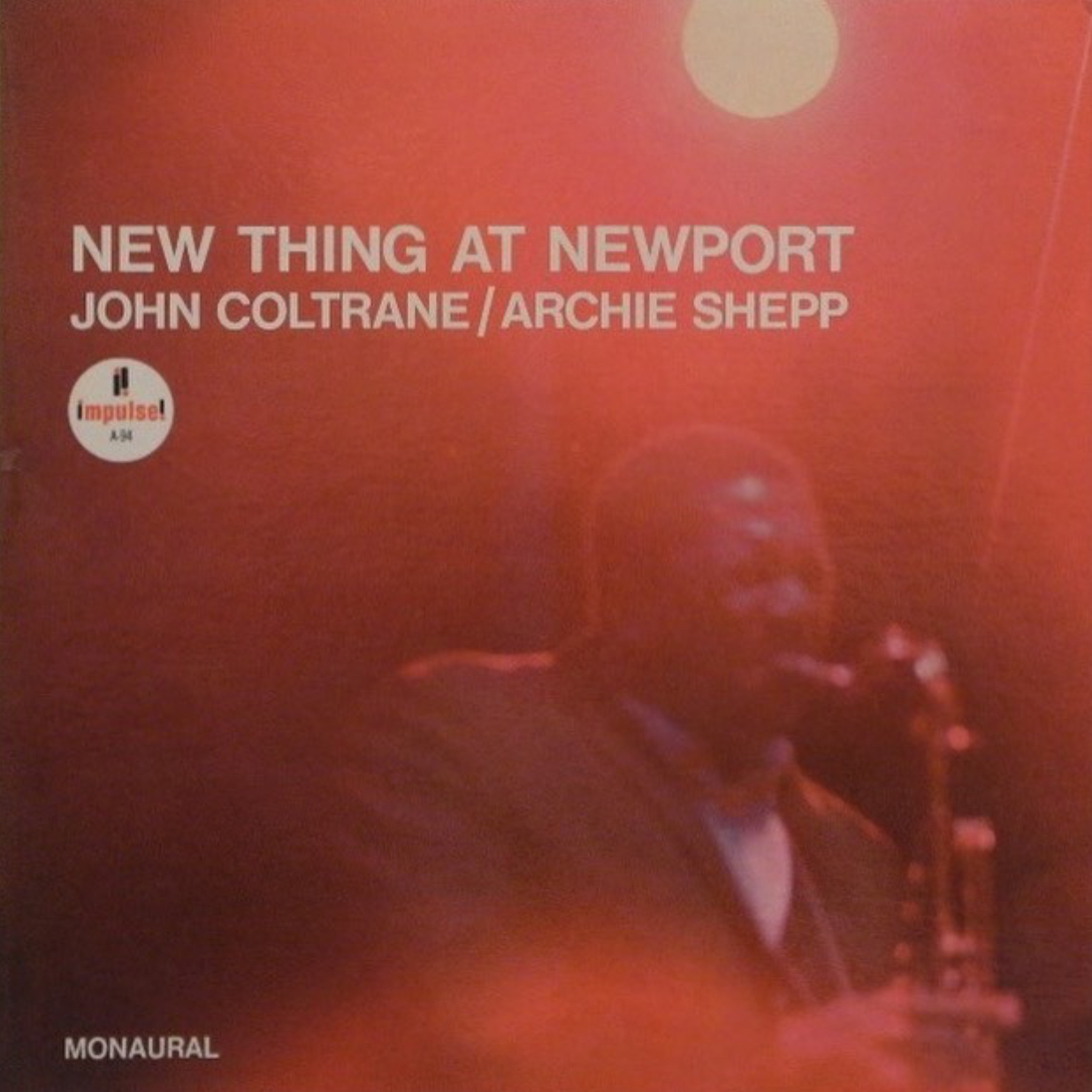 |
| Dott’s copy of New Thing at Newport |
DGM: How did you amass your collection and what’s your process for finding new records?
Dott: I like to consider my collection as a building in progress, brick after brick. I have been building since 1968, buying records everywhere in the world. Luckily I’ve travelled a lot, since I was young, so I had the opportunity to visit lots of stores in Europe and the U.S. I also received auction lists from well known sellers: Leon Leavitt, Carraro, Castelli, Mole Records. Later, eBay and now Instagram. I like to trade with other collectors too. For many years in my hometown there was a shop dedicated to jazz that was managed by a well known eBay seller. Not anymore.
DGM: How many jazz records do you have in your collection?
Dott: Now I have 757 twelve-inch and 113 ten-inch, also a few seven-inch. I’ve had many more in the past but I decided to keep only what I liked a lot. I never bought a record in order to resell. I have thousands of CDs: here I collect what I don’t have on vinyl yet or music that was never issued on vinyl. All these are in my office, vinyl is at home.
DGM: Do you collect originals, reissues, or both?
Dott: Most of my records are originals. This is a must for me. I would like to point out that the term “original” applies to one specific and unique issue. Too many times I see this term applied to records that are second or third or even later issues. Original is one and only one, sorry for reissues.
I’ve got some reissues, at least until I can’t find an original. The one I’m very fond of is a big red box with all Bill Evans’ recordings on Riverside. Almost impossible to find all the originals in great condition.
 |
| Dott’s copy of the Bill Evans Riverside box |
DGM: What equipment do you use for playback?
Dott: I’m not an audiophile nor a sound maniac. My current equipment was assembled more than 30 years ago and still serves me perfectly. Michell Gyrodec turntable with Well Tempered tonearm, Denon DL-103 cartridge, Mark Levinson 26 pre, Krell KSA 250 Class A amp, Magneplanar MG 3.3 speakers.
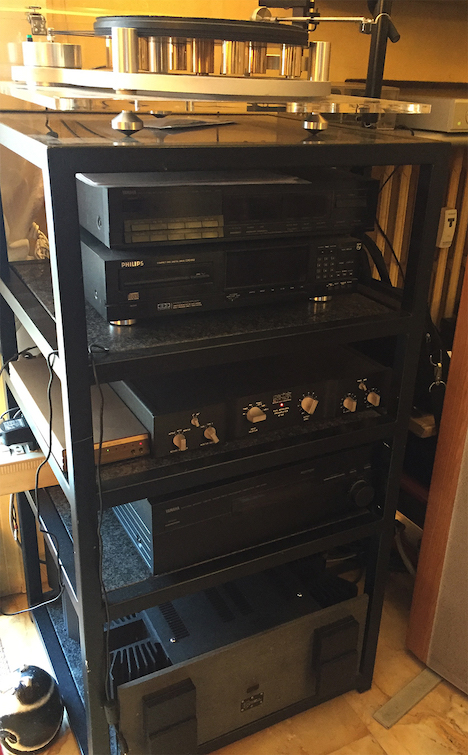 |
| Dott’s playback rig |
DGM: Do you prefer mono, stereo, or neither?
Dott: Most jazz I love comes from the mono age, maybe this is the reason why I prefer mono…more than 90 percent of my records are mono.
DGM: Who are some of your favorite artists and labels?
Dott: Number one: John Coltrane, no doubt. While I’m not a completist at all, I own almost everything Trane has recorded. Eric Dolphy comes second. All others share third place. There are some artists who are not usually considered as masters but have a special place in my heart: Booker Little, Fat Girl, and Phineas Newborn to name just three.
I am not a big fan of singers and I love instrumentals. The only exception, but more in the past: Lady Day.
For more than 50 years I have never been motivated by labels whatsoever. Music before all. But in the last couple of years I’ve been intrigued by New Jazz. Most of my last acquisitions are on this label.
DGM: What’s your favorite jazz record in your collection?
Dott: I have several important and expensive records: Blue Train NY23, Jackie McLean on Ad Lib, several Transition, many Blue Notes, but my heart is still bound to Impulse A-94, New Thing at Newport, from where I started. For this record only I’ve got mono and stereo versions.
 |
| Dott’s original pressings of Blue Train and Jackie McLean on Ad Lib |
DGM: What is one of your most memorable acquisition stories?
Dott: This is the question that got me into trouble. I love all my records as if they were my sons. Each one has its own story, how I tracked it down, how many years it took to find the right copy, how many miles walking to reach a particular shop. The first time I went to Jim Russel’s in New Orleans, I didn’t realize how many blocks it was from downtown, endless walk. Then there was the search for a shop in Chicago through a (dangerous) walk in the South Side. Every time I go to the U.S. now I rent a car just for reaching record shops — think of the Bay Area in San Francisco.
I must admit that none of my most valued records were cheap. Three stories about records I really wanted:
1. Albert Ayler on Debut. This is a set of three records I had been chasing for years since the late ‘60s (My Name Is Albert Ayler, Spirits, and Ghosts). At that time there was no info about the original issues, and the records themselves did not circulate. I went through several different versions before I found all the originals in 2002!
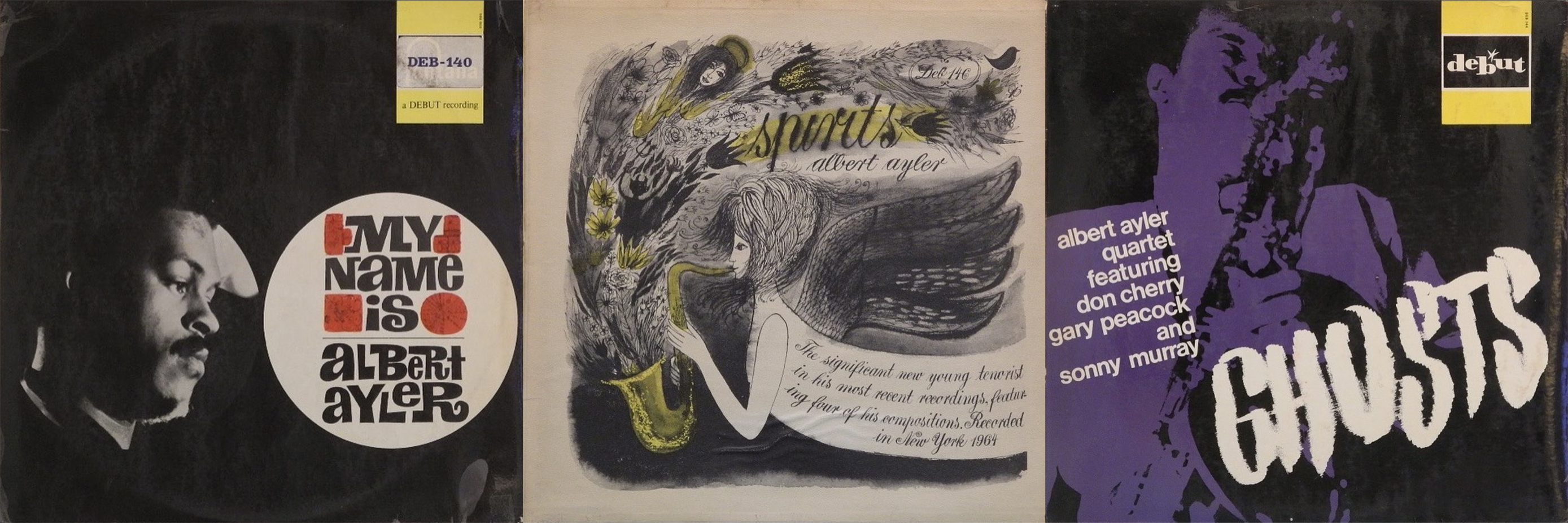 |
| Dott’s original pressings of Albert Ayler on Debut |
2. Albert Ayler again, his first recordings on the Bird Notes label. One of the recordings only had about 200 copies issued, the other went unreleased for a long time and only about ten test pressings were thought to exist. This was a real dream that came true when I acquired both in the late spring of 2001.
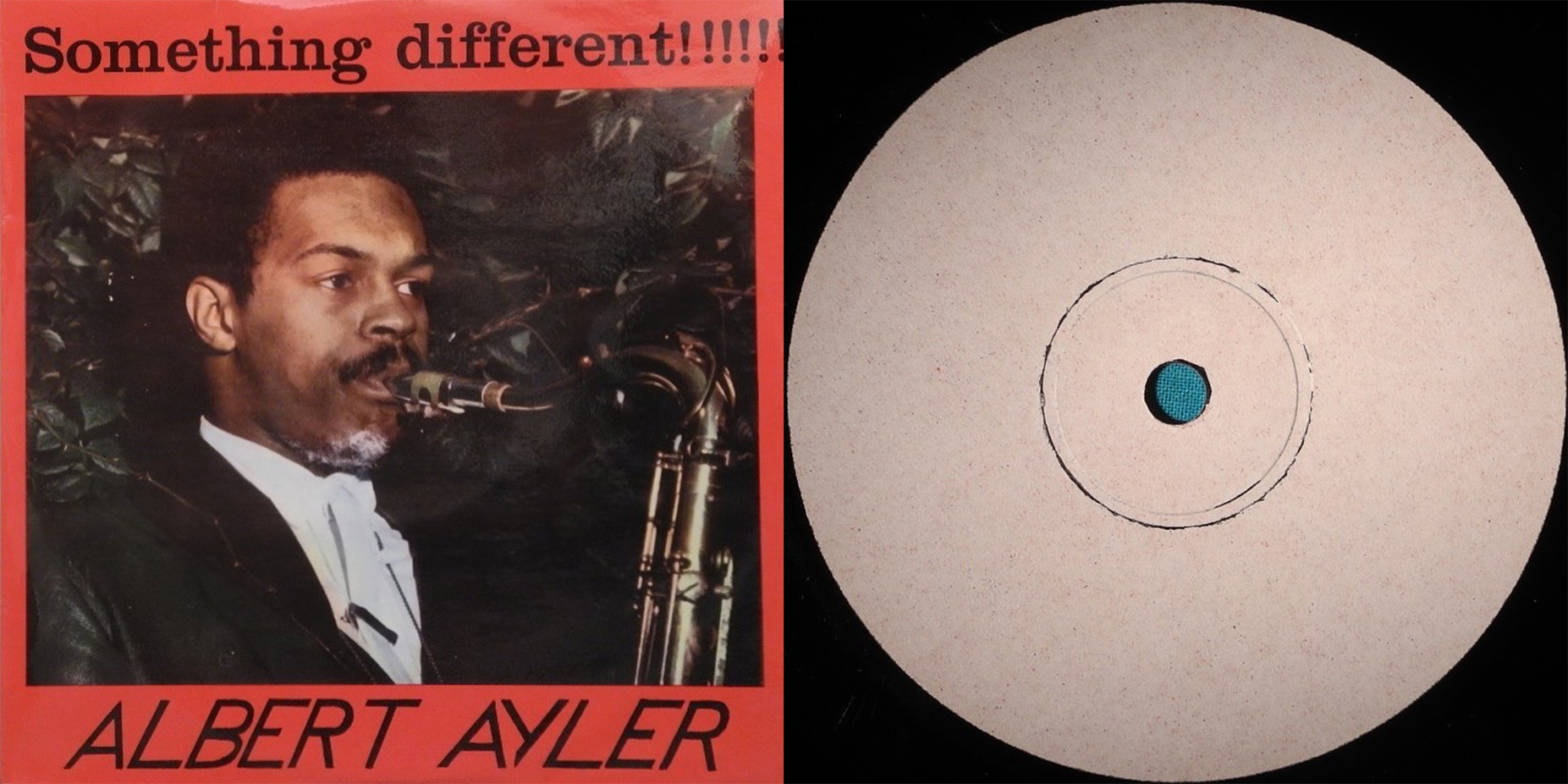 |
| Dott’s original pressings of Albert Ayler on Bird Notes (test pressing label on the right) |
3. John Coltrane, Historic Performances. Five Swedish bootlegs from 1961-1963. No art cover, no data, no printed label. Eric Dolphy playing. Five different colors. I knew one collector who had them all and I had been asking him to sell them for over ten years. One night I received a call: “Hi, still interested in those records?” Yyyyyyyes! “Well, come and get ‘em.” I rushed out in the snowy night and came home with my treasure. I’ve never seen this series complete again. It was January 30, 1980 — 40 years ago.
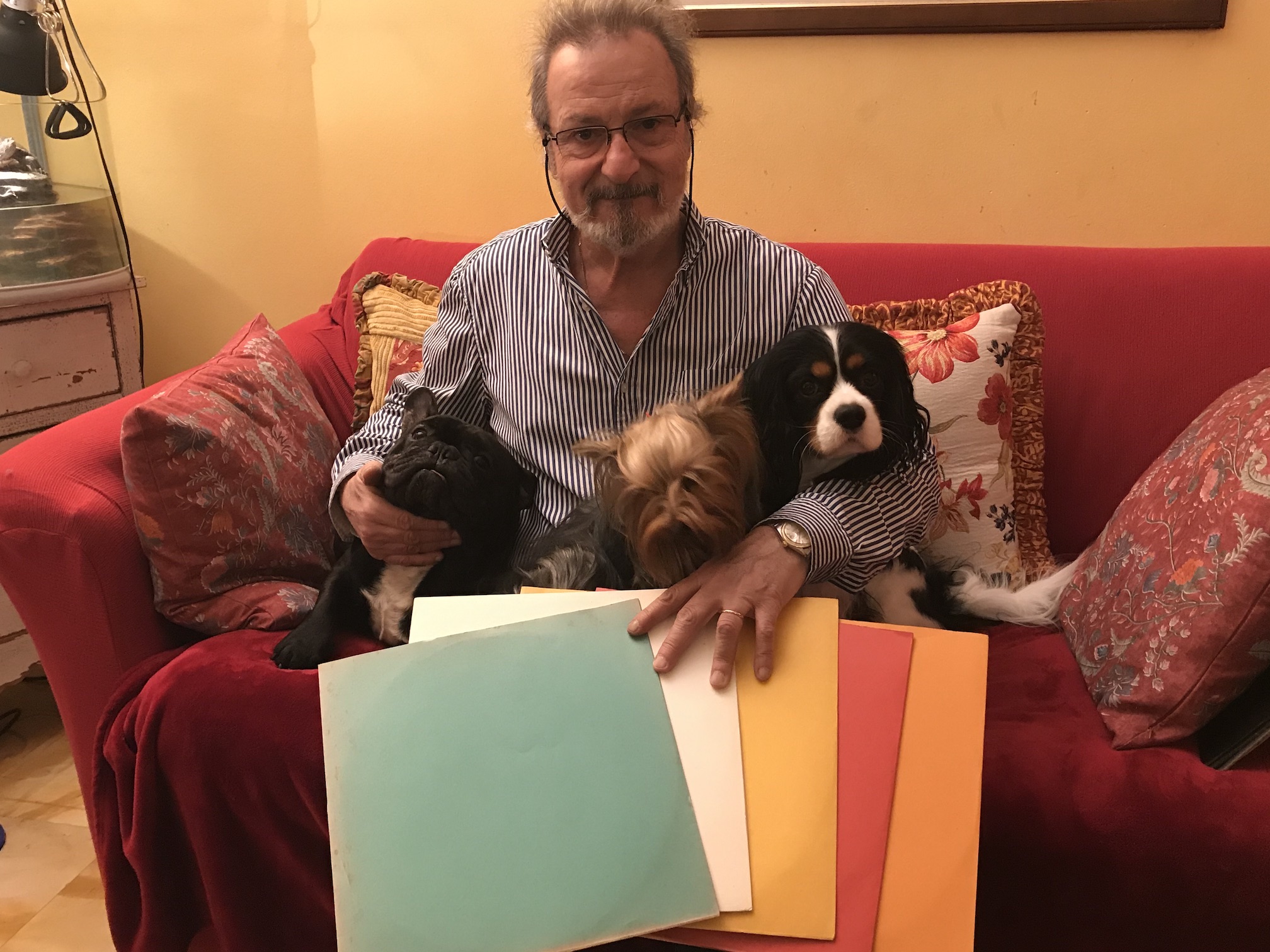 |
| Dott posing with his Coltrane Historic Performances set and his dogs, Nerone, Ulisse, and Michaelangelo |
DGM: How do you feel about eBay’s influence on the collecting experience?
Dott: eBay is the world market, easy to explore from home, no need to travel or walk around. I’m from an era before computers, an era when you had to move, sometimes a lot, to reach a shop. You would get your hands dirty in the record-hunter’s age, the record shop age. Much more interesting and exciting. eBay contributed to the closing of most shops, which is a real pity. Nowadays many shops sell preferably on eBay, so store visits today often end up useless.
DGM: What are your thoughts on the past, present, and future of the jazz record market?
Dott: In my decades collecting I personally visited some of the most known dealers. In 1980, while touring the U.S., I went to Leon Leavitt’s home and had a wonderful talk about jazz and the collecting world. Prices were quite different from now.
Many times I reflected on this: If I had to begin collecting today, looking for originals only, how could I ever justify buying all the records in order to have a collection like mine, if it were even possible? No doubt I had much less money when I began, but it would be impossible today. My impression is that collectors are not focusing on too many records currently, and that prices are not aligned with real rarity; see for example Blue Note 1568, a record that appears quite often. Blue Note is a label apart: most of its issues have reached prices well over the reality of their rarity, and second or third pressings of Blue Notes are overvalued. Anyway, those all get sold. This cuts a lot of collectors out, leaving them recent reissues only. Anyway, interest for jazz collecting is far from dead, at least for music from the ‘50s and ‘60s. Most jazz from prior decades is neglected and, speaking for myself, most jazz coming after free jazz is out of my interests.
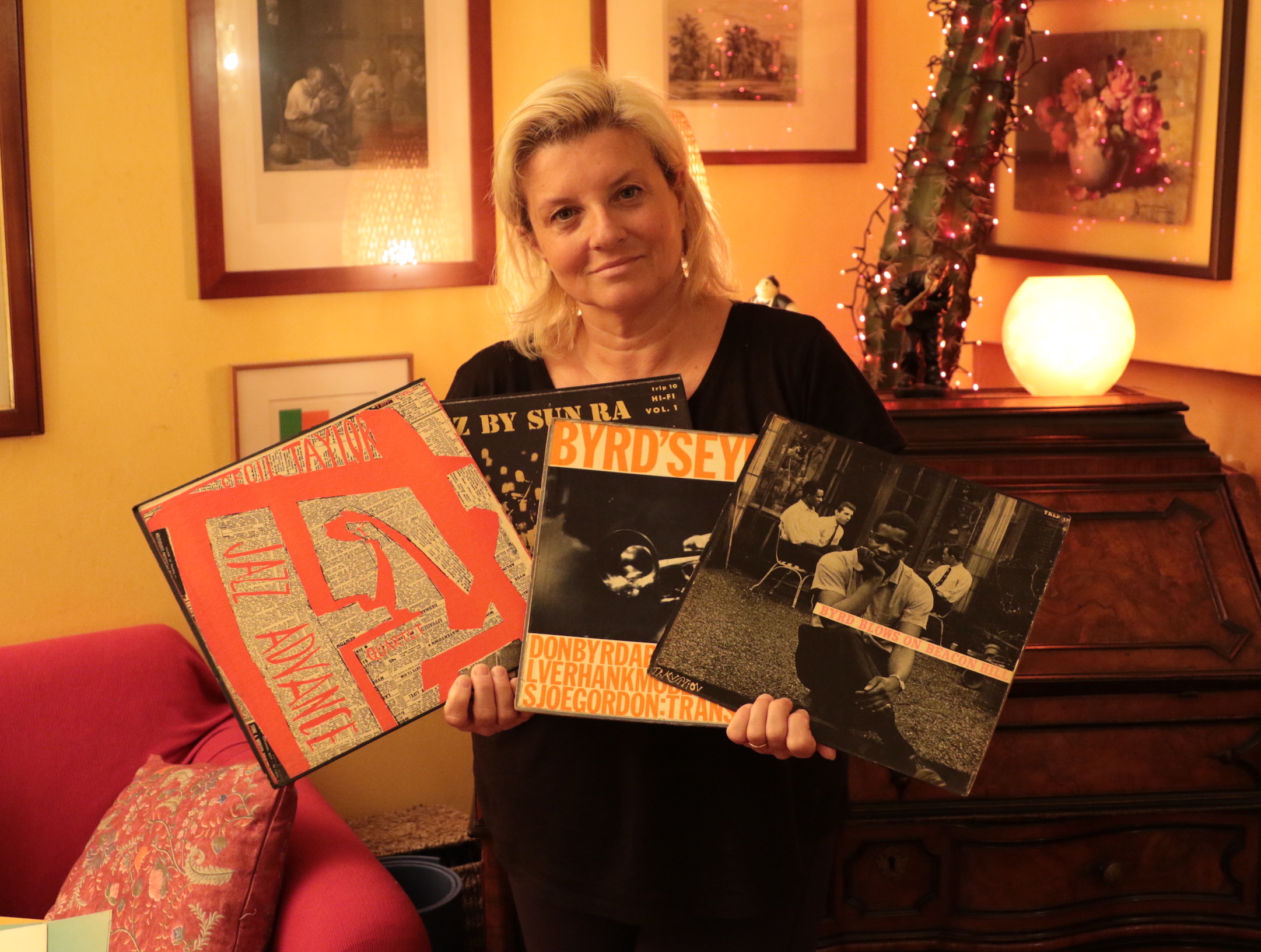 |
| Dott’s wife, Fiammetta, getting in on the action |
DGM: Do you have any advice for other collectors?
Dott: Any record should have some compulsory features: you should love the music, it should be an original pressing, and it should be in excellent condition, both the vinyl and the cover. With these features you’ll be satisfied for a long time, and, whenever you decide to sell, it will be easy enough. Remember, you are buying an object that was intended to be played, not displayed. A record on a wall is dead, a record spinning is alive.
And finally, no record is impossible to find. Have patience and you will be rewarded.

